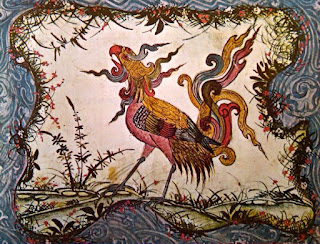Persian Mythology
PERSIAN FOLKLORE Persian folklore or Iranian folklore (Persian:اساطیرشناسی ایرانی) is the body of the fantasies initially told by old Persians and other Iranian people groups, and a sort of Old Persian legends. These accounts concern the beginning and nature of the world, the lives and exercises of divinities, legends, and legendary animals, and the starting points and meaning of the antiquated Persians' own faction and ceremonial practices. Present-day researchers concentrate on the fantasies to reveal insight into the strict and political foundations of current Iran as well as the More noteworthy Iran, which incorporates locales of West Asia, Focal Asia, South Asia, and Transcaucasia where Iranian culture has had a huge impact. By and large, these were areas long administered by lines of different Iranian empires,[note 1][1][2][3] that integrated impressive parts of Persian culture through broad contact with them,[note 2] or where adequate Iranian people groups settled to in any case keep up with networks who belittle their separate cultures.[note 3] It generally compares to the Iranian level and its lining plains.[4][5] The Encyclopædia Iranica involves the term Iranian Social Mainland for this region.[6][7]
The Homa sculpture in Persepolis
Contents
Strict foundation
This segment refers to no sources. Kindly assist with working on this part by adding references to solid sources. Unsourced material might be tested and eliminated. (September 2021) (Figure out how and when to eliminate this format message)
Most characters in Persian folklore are either great, or they are malevolent. The resultant disunity reflects the nationalistic standards of the early Islamic time as well as the moral and moral impression of the Zoroastrian time frame, in which the world was seen to be secured in a fight between the horrendous Ahriman and his crowds of satanic Divs and their American allies, versus the Maker Ormuzd, who albeit not taking part in that frame of mind to-day undertakings of humanity, was addressed on the planet by the lizards and the noble ahead Iranians.
Great and Wickedness
This segment refers to no sources. Kindly assist with working on this part by adding references to solid sources. Unsourced material might be tested and eliminated. (September 2021) (Figure out how and when to eliminate this format message)
On the opposite side of the wall is Zahhak, an image of oppression who was, at last, crushed by Kāve, who drove a famous uprising against him. Zahhak (Avestan: Aži Dahāka) was watched by two snakes that became out from both of his shoulders. Regardless of how frequently they were executed, new heads developed them to monitor them. The snake, as in numerous different legends, was an image of wickedness, however, numerous different creatures and birds show up in Iranian folklore, and, particularly, the birds were indications of hints of something to look forward to. Generally popular of these is the Simurgh, a huge, lovely, and strong bird; and the Huma bird, a regal bird of triumph whose tuft decorated Persian crowns.
Peri (Avestan Pairika), a delightful but underhanded lady in early folklore, bit by bit turned out to be not so much malevolent but rather more lovely.
The contention between great and evil is predominant in Persian fantasies as well as Zoroastrianism.
.jpg)


Comments
Post a Comment